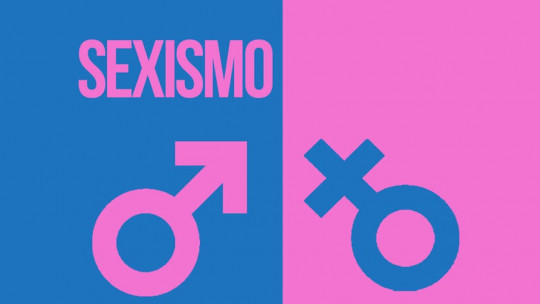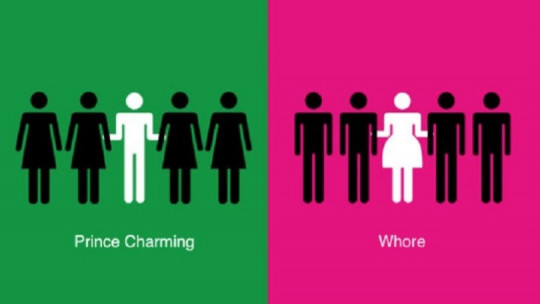
Sexism, simply put, is discrimination based on gender, manifested from ingrained gender stereotypes to discriminatory practices in the workplace, social and cultural fields. At its core, sexism reflects and reinforces power inequalities between men and women, which have been determined throughout history by the way in which societies have been built based on male power and using this asymmetry of powers to conquer land, rights and freedoms.
To better understand sexism, it is crucial to explore its many facets It is not simply limited to obvious discrimination; it is subtly filtered through words, attitudes and expectations embedded in our daily interactions. From childhood, girls and boys are exposed to predefined gender roles that influence their perceptions and behaviors as they grow.
Why does sexism exist in the world?
Sexism can be differentiated and perceived in overt forms, such as pay discrimination and lack of representation in leadership roles, as well as in more subtle manifestations, such as objectification and objectification. By understanding the diverse expressions of sexism, we can effectively address its roots and work toward a more equitable and inclusive society.
If we had to give a short answer to the key question of this article, sexism continues to exist because the way the world and our societies have been constructed stem directly from it. It is impossible for sexism to cease to exist until we question the entirety of our structures ; social, moral, emotional… Everything that differentiates us is determined by the cement that joins the bricks of our society, and will last until we tear down its walls.
History of sexism
Sexism has deep roots in human history. Over the centuries, societies have witnessed patriarchal systems that have perpetuated gender-based inequalities. From ancient power structures to more recent struggles for gender equality, the history of sexism is complex and multifaceted.
In ancient civilizations, gender norms often dictated specific roles for men and women, relegating the latter to subordinate positions. For example, relegating women to gathering and men to hunting in primitive societies is a way in which these gender roles that remain to this day began to be constructed, making a binary differentiation between the masculine and the female. Although there were moments of resistance and outstanding female figures, most historical societies were marked by gender inequality
During the feminist waves of the 19th and 20th centuries, women began to actively challenge oppressive structures. Voting rights, equal pay, and access to education were prominent goals of these movements. However, despite significant progress, challenges and obstacles persist that reflect the tenacity of sexism today.
The history of sexism is an evolving narrative, with each generation facing and challenging the imposed norms. Reflecting on this past allows us to better understand the context in which we live today and provides a basis for addressing and transforming the structures that perpetuate gender discrimination.
Cultural factors
Sexism, rooted in society, finds fertile ground in cultural norms that influence the perception and treatment of gender. These norms, transmitted through generations, contribute to the creation and consolidation of stereotypical gender roles that perpetuate inequality.
Gender representations in the media, from advertising to the entertainment industry, play a crucial role in shaping cultural attitudes toward men and women. The objectification of female bodies and the promotion of gender stereotypes contribute to the normalization of sexist practices. These representations perpetuate inequalities in areas such as labor participation and decision making
Cultural traditions also play an important role in perpetuating sexism. Long-standing practices, such as assigning specific gender roles, contribute to segregation and often limit opportunities for individual development. Challenging these cultural norms implies a profound change in the perception of gender roles and the redefinition of equality in all spheres of life.
Education plays a vital role in cultural transformation. Introducing educational programs that encourage gender equality from an early age can break down gender stereotypes and foster a more inclusive perspective. It is essential to advocate for equitable representation at all educational levels and ensure that values of respect and equity are promoted.
Psychological factors
Psychological factors play a crucial role in the perpetuation of sexism, as they influence the formation of individual attitudes, beliefs and behaviors. Gender socialization, from childhood to adulthood, contributes to the internalization of specific gender-based roles and expectations.
Gender socialization begins in the first years of life, when boys and girls are expected to adopt behaviors and toys associated with their gender. These expectations shape gender identity and affect self-esteem and psychological development of individuals Deeply ingrained in the psyche, gender stereotypes influence the way people perceive themselves and others.
Gender stereotypes are also reflected in social expectations about “appropriate” behavior for men and women. Sexist attitudes can arise when individuals deviate from these expectations, whether in the workplace, social or family environment. The pressure to fulfill these predefined roles can lead to discrimination and limit opportunities for personal and professional development.
Furthermore, the psychology of sexism manifests itself in more subtle attitudes, such as sexist benevolence and sexist hostility. The former involves paternalistic attitudes toward women, while the latter reflects overt hostility. These attitudes, often internalized without awareness, contribute to the creation and maintenance of gender inequalities.
Addressing the psychological factors of sexism involves challenge and change ingrained perceptions Education and awareness are key tools to break discriminatory thought patterns. By understanding and addressing the psychological aspects of sexism, we can work toward a society that promotes gender equality and individual freedom.
Socioeconomic factors
Sexism is intertwined with socioeconomic factors that reflect and reinforce systematic inequalities. These disparities manifest themselves in various areas, from the workplace to access to educational opportunities and economic resources.
In the workplace, wage gaps persist between men and women. Despite significant progress, women continue to face challenges in accessing leadership roles and being paid fairly. Factors such as occupational segregation, where certain jobs are considered “traditionally female” and are less paid, contribute to these disparities
Motherhood can also affect women’s employment opportunities, as cultural expectations often lead to discrimination and lack of support in the workplace. Labor and social policies that do not adequately address these issues perpetuate gender inequality in the professional field.
Access to education is another key aspect. Although progress has been made in many places, inequalities in access to education for girls and women persist in some parts of the world. The lack of equitable access limits development opportunities and contributes to the perpetuation of traditional gender roles.
Addressing the socioeconomic factors of sexism involves implement policies that promote equal opportunities Measures such as equal pay, equal parental leave and universal access to education can significantly contribute to reducing gender disparities.
Overcoming sexism
Overcoming sexism requires a collective commitment to challenge entrenched cultural norms, address underlying psychological and socioeconomic factors, and promote gender equality in all areas of life Education and awareness play a crucial role in this process, empowering people to recognize and resist sexist attitudes and behaviors.
Furthermore, it is essential to implement policies and programs that promote equal opportunities and inclusion, both in the workplace and in education. By actively challenging the structures and systems that perpetuate gender discrimination, we can work together towards a more equitable and just society for all, where every individual has the freedom to express and develop fully, regardless of her gender.
In conclusion, overcoming sexism involves challenging entrenched stereotypes, advocating for equal opportunities and fostering collective awareness. Addressing cultural, psychological and socioeconomic aspects is essential to build a more equitable society. Education and the promotion of inclusive policies are crucial tools on this path towards eradicating sexism and promoting gender equality.








